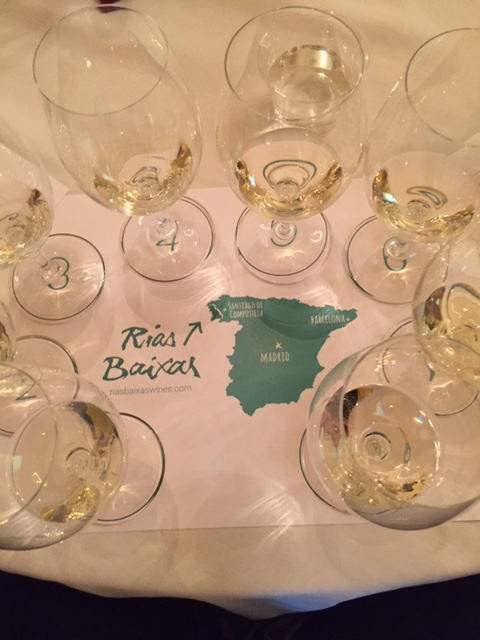Today we’re wrapping up Palindrome Week, a 10-day string of dates that read the same forwards and backwards: 9-10-19, 9-11-19, 9-12-19…you get the picture.
Although I couldn’t find any wine grapes whose names are palindromes, the quirky dates got me wondering: how did wine grapes get their names, anyway? Was there once a Frenchie named “Monsieur Sauvignon”? Or an Australian cat named Sherlock Shiraz?

[“Coronation Grapes” by Amber Fox, courtesy of Flickr]
The origins of grape names, it turns out, are logical for the most part, though some are more interesting than others. I found the stories behind eight common wine grapes:
- Chardonnay actually is a small village in the Mâconnais region of southern Burgundy, a part of France where Chardonnay grapes thrive. (If you weren’t aware, Chardonnay wine from that part of the world is sometimes referred to as “White Burgundy.”) The word means “place of thistles.”
- Gewürztraminer translates to “spiced Traminer,” a mutation of the Traminer grape from Tyrol, or northern Italy. We know it as an almost-perfumey star wine of Alsace.
- Malbec is mostly known as a red wine grape from the Mendoza region of Argentina, but it was once known as Auxerrois from the Cahors region of France. There, it’s known as Côt, Cor, Cos, or Cau, obviously derivatives of Cahors. It may be called Malbec because it was planted in Bordeaux in the 1780s by a Monsieur Malbeck.
- Merlot‘s history is pretty straightforward: the name of the dark, rich grape came from “merle,” the French word for Blackbird.
- Pinot Noir means “pine” and “black,” relating to the dark, pine cone-shaped clusters of Pinot Noir grapes on the vine. Pinot lovers refer to Burgundy as the “spiritual home” of Pinot Noir, and when you see a bottle on a wine store shelf that’s simply labeled “Bourgogne” or Burgundy, it’s Pinot Noir.
- Riesling references date back to 1477, when some writings in Alsace called it “Rissling.” There’s also a small vineyard and stream in Austria called Ritzling, and some claim that’s the origin of the name. A third possibility: the origin may be traced to durchriesein, a word with many spellings and meanings, including “inability to flower in cool temperatures.”
- Sauvignon boasts a wild history, so it’s appropriate that its name derives from the French word “sauvage,” which translates to “wild.” Cabernet Sauvignon is an accidental cross between Cabernet Franc and Sauvignon Blanc grapes.
- Shiraz might be known as the signature grape of Australia, but its ancestry spans three continents: the name refers to the wine-producing city of Shiraz in Iran, and the grape originated in southeast France.
Enjoy what’s left of Palindrome Week, because the wacky pattern won’t happen again until 2021–on 12-1-21, to be precise. The 10-day string of palindrome dates happens every century, always in the second decade. And you might want to pour a special glass this evening, Thursday, September 19 at 19 minutes and 19 seconds past 9, when it will be 9-19-19, 9:19:19.
That factoid has nothing to do with wine history, but it’s an excuse to celebrate anyway, just a little.
Wine Lingo: Wine thief = no, it doesn’t mean your cousin Lizzie who “borrows” one of your best bottles and never replaces it. If you haven’t seen a wine thief in person, you’ve seen photos: it’s the long glass or metal tube used by winemakers to draw samples from wine barrels.

Vino ‘View: 2011 Peterson Syrah, Gravity Flow Block, Dry Creek Valley (13.8 percent alcohol, $48) Get out your decanter, because this full-bodied Sonoma red will need to breathe for an hour or so. It’s not a cheap bottle, so you’ll want to drink it at its best. The aroma is intense, with smoke and black fruit wafting up. After decanting, the wine finds a good balance, with smoke and oak remaining on the palate through the long finish. Dry leaves sneak in–have you tried CBD oil? I detected a bit of the same mushroomy, earthy taste. Not that the fruit is lost; I tasted plum, blackberry and maybe avocado. Drink it now; this wine won’t benefit from any more aging.
[The Peterson Syrah was sent to BigSexyReds for review.]
Cheers!
Mary







 I have a love-hate relationship with poetry. My clearest poetry-memory is sitting in Mrs. Weber’s 9th-grade English classroom with half a dozen friends. She was punishing us for talking in class, keeping us there until we memorized Shakespeare’s 29th sonnet: “When in disgrace with fortune and men’s eyes, I all alone beweep my outcast state, And trouble deaf heaven with my bootless cries, And look upon myself and curse my fate,…” I still haven’t forgotten that damn iambic pentameter.
I have a love-hate relationship with poetry. My clearest poetry-memory is sitting in Mrs. Weber’s 9th-grade English classroom with half a dozen friends. She was punishing us for talking in class, keeping us there until we memorized Shakespeare’s 29th sonnet: “When in disgrace with fortune and men’s eyes, I all alone beweep my outcast state, And trouble deaf heaven with my bootless cries, And look upon myself and curse my fate,…” I still haven’t forgotten that damn iambic pentameter.
